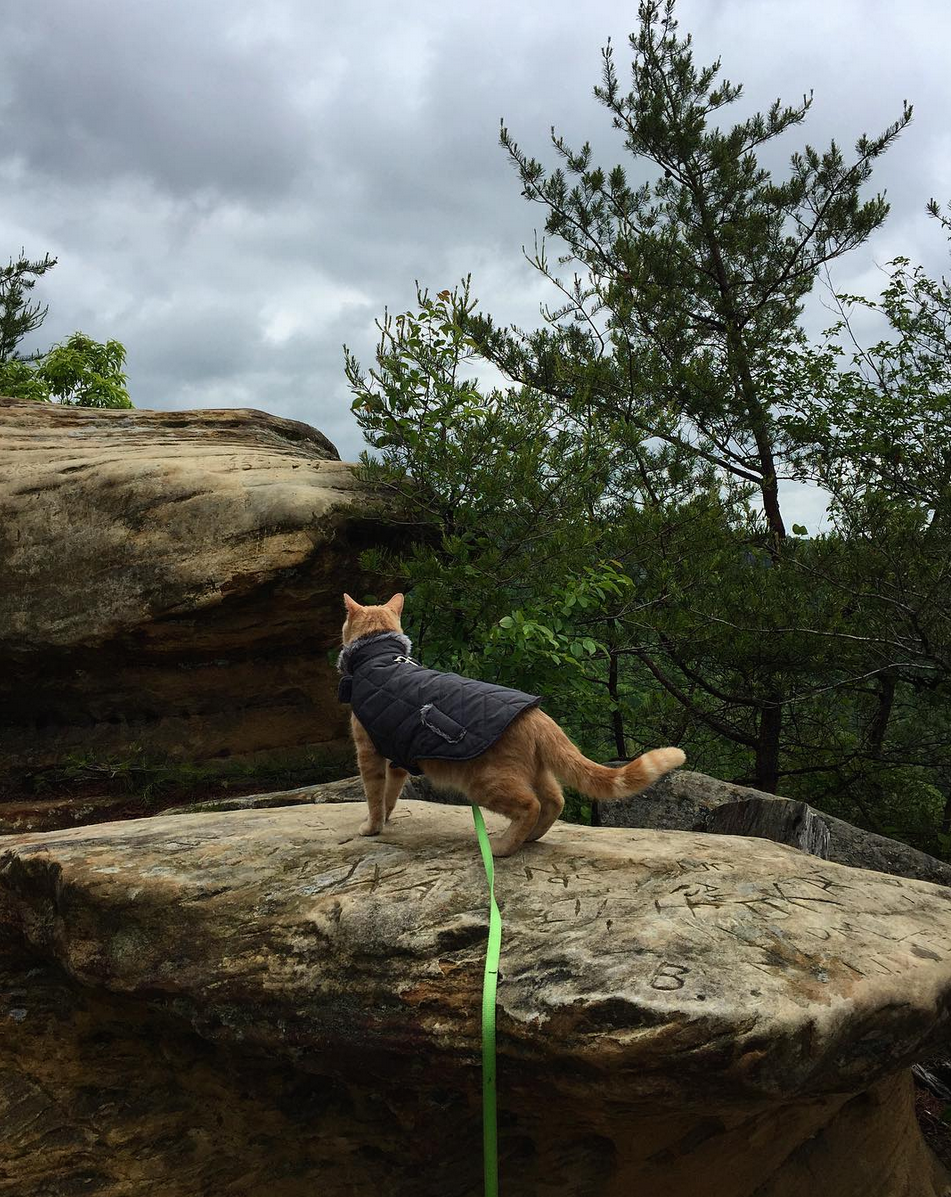10 Ways to Keep Your Pet Safe On Adventures

Having a pet is an adventure in itself, but your favorite outdoor activities are always more fun with your furry friend by your side. From paddle boarding to hiking to snowmobiling, adventure awaits around every corner. With a few simple safety tips, your pet can be involved in it all!
These 10 tips will help ensure your pet’s safety and enjoyment on all your adventures.
- Find a good harness. For outdoor adventures, a vest harness works better than a strap harness or collar as it gives you more control over your pet without straining him or her. To check if your pet’s harness fits correctly, make sure you can fit exactly two fingers in between the harness and your pet. If you have a pet who isn’t used to being on leashes, you should practice having your pet wear the harness at home before going on a real adventure. This helps keep your pet calm and comfortable when heading outdoors.
- Stay hydrated. Animals tend to dehydrate quicker than humans. When adventuring, make sure to bring enough water for the both of you. Unless you’re able to boil it beforehand, don’t let your pet drink from streams or other natural water sources. These bodies of water often contain b
 acteria like E. coli or other contaminants that could be harmful to your pet’s health. If you find your furry friend isn’t comfortable drinking outside or in an unfamiliar setting, you can spray or mist your pet and allow him or her to lick it off. This will help prevent dehydration and can also be a good cooling source.
acteria like E. coli or other contaminants that could be harmful to your pet’s health. If you find your furry friend isn’t comfortable drinking outside or in an unfamiliar setting, you can spray or mist your pet and allow him or her to lick it off. This will help prevent dehydration and can also be a good cooling source.
- Be mindful of the outdoor temperature. If it’s a hot day, sun-soaked pavement can burn your furry friend’s paws. On a chillier day, bundle your pet up in an appropriately sized jacket. Whether it’s through panting, shivering, or drooling, your pet will let you know if the temperature is just too much. If it’s too hot or too cold, save your adventure for another day.
- Check your pet’s paws. Rough terrain can be hard on your pet’s feet. Dirt, rocks, twigs, and other things can cause bruising, scrapes, punctures, splinters, and otherwise painful abrasions. Make sure to check your pet’s paws before and after each adventure and contact your vet immediately if something appears to be distressing your companion.

- Pay attention to park rules. Many parks have a six-foot leash rule. You may also run into trails and other designated zones where pets are not allowed. Bear in mind that these rules are not set to limit you, but to keep you and your pet safe.
- Be wary of crevices, logs, and rock piles. These are common hiding places for little critters such as snakes, lizards, chipmunks, and other things that could nip at your pet if disturbed. Depending on where you live, some of these creepy crawlies could be venomous. So if your pet is confident enough to do some climbing or balancing, be aware of where they’re stepping so you don’t run into any unexpected guests.
- If engaging in water activities, acclimate your pet first. Some pets are naturally comfortable in water. Others take more time. Gauge your pet’s comfort level before diving in, figuratively or literally. Be sure you have a life vest that not only fits your pet properly, but is also designed to carry his or her weight.
- Microchip your pets. No one likes the thought of their beloved pet running off, but in the unfortunate event that your pet gets away from you during an adventure, you’ll want to be prepared. Even if you don’t anticipate your animal getting lost, a microchip helps ensure your little adventurer will always get back to you safely.

- Stay up to date on vaccinations and worming. This is especially important for pets like cats and other animals who aren’t typically outside all day like many dogs are. Outside, your pet is exposed to many more disease and infection carrying agents, such as ticks, fleas, feral animals, and other wildlife. An all-indoor animal isn’t usually vaccinated against all of these things, so talk to your vet about what immunizations will best protect your pet.
- Above all, listen to your pet. Never force an animal to do something he or she doesn’t want. All pets are comfortable with different things, and you can’t expect every animal to be as keen on adventuring as the next. Positive reinforcement is always a good idea, and praise and encouragement will go a long way with timid pets. Your furry friend will tell you what he or she is ready to do, and when they do, listen. Give breaks and allow time to rest and refuel. If your pet is looking worn out, there’s nothing wrong with calling it a day a little early.
Cooperate with your pet’s wants and needs and in no time you’ll have a little adventurer on your hands. Follow these guidelines to keep your companion safe, and you’re sure to have many memories to enjoy!
What’s your favorite adventure you’ve taken with your pet? Leave a comment and let us know!
